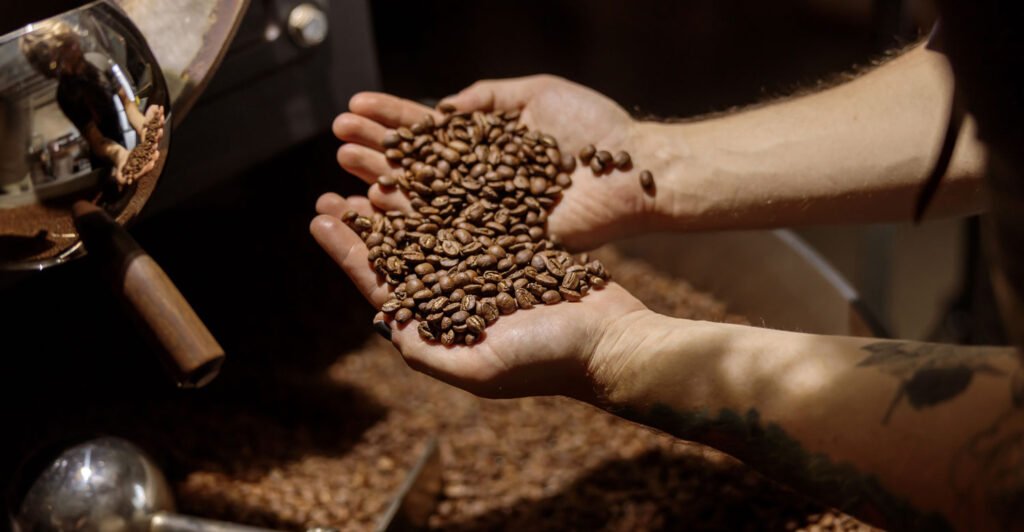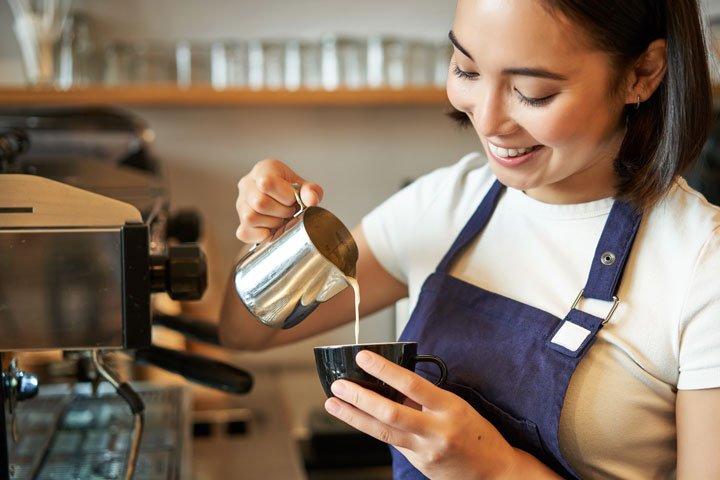The many types of coffee, the beloved beverage savored by millions worldwide, stand as a symbol of energy and comfort. It plays a crucial role in the morning routines of countless individuals, providing an aromatic and revitalizing start to the day. Understanding the types of coffee and how coffee is made made deepens our appreciation for this enticing drink. The process from bean to cup, involving meticulous cultivation, detailed processing, and precise roasting, contributes to the unique flavor profiles that distinguish each variety.
Moreover, brewing your own coffee unveils a spectrum of advantages—not only does it open a door to a world of flavors, but it also grants the brewer control over strength, taste, and quality. From the selection of the perfect beans to the final pour, the act of brewing at home becomes a personalized ritual, ensuring that each cup carries its distinctive style and character. The creative endeavor of home brewing can lead to both an economically savvy practice and a means to elevate one’s daily coffee experience.

How Coffee Is Made
Processing the Beans
Processing the beans is the initial phase after coffee cherries are harvested. The aim is to extract the beans from the cherry while minimizing damage and preserving flavor.
There are two primary methods: the dry method, which is an age-old technique where cherries are laid out to sun-dry for several weeks, and the wet method, where the flesh of the cherry is removed, and the beans are fermented in water to dissolve any remaining pulp before drying.
The method chosen can influence the subtleties in flavor and is a pivotal part of how coffee is made.
Roasting the Beans
Once processed, the beans enter the roasting phase. This step is transformative as the green, spongy beans are heated to develop their signature brown hue and complex flavors. The temperature and duration of roasting vary, creating a spectrum from light to dark roasts, each with its own profile.
Light roasts retain more of the bean’s original character and higher acidity, while dark roasts feature a bolder, more robust flavor with a pronounced bitterness.
Grinding the Beans for Brewing
After roasting, beans must be ground to the appropriate coarseness for brewing. A fine grind is typically used for espresso, as it allows for a slow and intense extraction under high pressure. A medium grind works well for drip and pour-over methods, which rely on gravity and infusion, balancing flow and flavor extraction. A coarse grind suits methods like French press or cold brew, demanding a longer steeping time. The grind’s size impacts the surface area exposed to water, dictating the extraction rate of oils and flavors – a crucial iteration in the types of coffee that can be brewed.
For those seeking convenience without compromising quality, there are innovative solutions in today’s market. With advancements in technology, coffee lovers can now enjoy brewing the perfect cup in mere seconds. Single-serve coffee machines and pre-packaged coffee pods have simplified the brewing process while maintaining the integrity of how coffee is made. These smart designs control temperature and brewing time, efficiently extracting flavor and aroma from the beans.
Coffee capsules, on the other hand, have revolutionized the experience, offering an array of bean origins, roasts, and blends. These capsules are pre-measured, ensuring consistency in every cup. Manufacturers have meticulously processed, roasted, and ground the beans, encapsulated in an oxygen-free environment to preserve freshness. By inserting a capsule into a machine and pressing a button, coffee aficionados can savor a barista-quality drink instantly, without the need to manually handle beans or grinds.
Different Varieties of Coffee You Can Enjoyable
The world of coffee is vast and diverse, offering an assortment of types and flavors to suit any palate. The types of coffee you can enjoy are rooted in two main species of coffee beans, the processing of beans, and the various ways in which coffee is made.
Arabica vs Robusta Beans
Arabica and Robusta are the two primary species of coffee consumed globally. Arabica beans are known for their smooth, mildly acidic flavor profile and lower caffeine content compared to Robusta. They often possess a wide spectrum of flavors and aromas, including hints of fruits, berries, or nuts, making them highly sought after in the specialty coffee market.
On the other hand, Robusta beans, with their stronger, more assertive taste and higher caffeine level, are commonly used in espresso blends to impart a full-bodied experience and a lingering crema.
Light, Medium, and Dark Roasts
Roasts greatly influence the taste and aroma of brewed coffee. Light roasts retain much of the bean’s original character and typically exhibit a higher acidity and more nuanced flavors. Medium roasts strike a balance, reducing acidity while introducing more body and a fuller flavor. Dark roasts present a pronounced bitterness and can bring forth chocolatey to smoky notes, offering a robust experience while muting the bean’s inherent flavors.

Espresso-based Drinks
Espresso is a concentrated form of coffee made by forcing hot water through finely-ground coffee beans under high pressure. This coffee-making method is the foundation for many popular beverages. Lattes combine espresso with steamed milk and a light layer of foam for a creamy concoction, while cappuccinos offer a richer foam-to-milk ratio. The stronger macchiato features a mark of steamed milk on a shot of espresso. Enthusiasts relish the pure intensity of a ristretto, a shorter, more concentrated espresso shot.
Flavored Coffees
Flavored coffees cater to those with a penchant for variety and an adventurous taste. These coffees are often infused with spices, extracts, and syrups, adding layers of taste such as vanilla, caramel, hazelnut, or even seasonal blends with pumpkin or peppermint. These types of coffee offer a delightful twist to traditional brews and serve as a versatile choice for diverse preferences.
Decaffeinated Options
For those who enjoy the taste of coffee but are sensitive to caffeine, decaffeinated options are an ideal choice. The decaffeination process involves removing the caffeine from the beans before roasting. Methods such as the Swiss Water Process use no chemicals, preserving the coffee’s natural flavor.
These decaf brews allow one to partake in the social and cultural rituals of coffee drinking without the stimulating effects.
Cold Brews
Cold brew coffee has surged in popularity due to its smooth, mellow profile. Produced by steeping coarse coffee grounds in cold water for an extended period (often 12 hours or more), cold brew is known for its low acidity and rich taste. It can be served over ice or used as a base for iced coffee drinks, offering a refreshing alternative to traditional hot brewing methods.
Instant Coffees
Instant coffee, a product of convenience, captures the essence of coffee in a soluble powder or granule form. How coffee is made into instant coffee involves brewing it and then either freeze-drying or spray-drying the liquid away, leaving behind dehydrated crystals. Though sometimes frowned upon by purists, instant coffee has evolved, with premium versions available that offer a more satisfactory taste close to freshly brewed coffee. It’s perfect for those in a rush or with limited equipment, showcasing the vast adaptability of coffee.
With such a broad variety, the types of coffee you can enjoy are nearly endless. Each variety delivers a different experience, from the origin-specific characteristics of Arabica and Robusta beans to the myriad choices your palate can explore through roasts and flavors. Espresso-based drinks cater to those who appreciate intensity and tradition, while flavored coffees, decaffeinated options, cold brews, and instant coffees provide alternatives that meet diverse needs and preferences.
This journey through coffee’s assorted styles not only reflects its global appeal but also embodies the innovation and cultural significance it holds in our lives.
The Last Drop

The world of coffee is as intricate as it is enchanting. Whether your preference leans toward the distinguished Arabica, the robust Robusta, a delicately flavored latte, or a potent shot of espresso, there’s a blend or brew to delight your senses and enrich your daily routine.
As you explore the vast landscape of coffee varietals, each sip offers a new story, a fresh taste, and a unique experience. From light, aromatic roasts to bold, dark concoctions; from the smoothness of decaf to the convenience of instant coffee; every cup tells part of coffee’s timeless tale.
Embrace the diversity of this beloved beverage and let each method of preparation and type of coffee you choose to enjoy become an integral part of your life’s mosaic.
To keep your coffee journey exciting and your knowledge expanding, be sure to subscribe to our website for notifications of new articles, events, and videos. Stay informed and become part of a community that shares your passion for all things coffee.
Cheers to your next cup and the many delightful moments it will bring.








